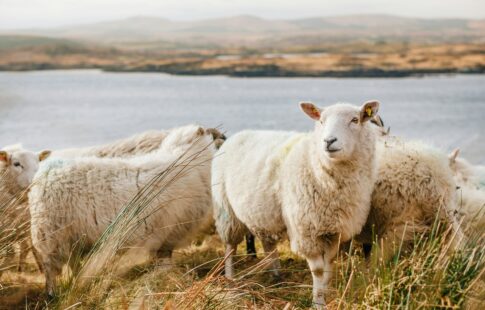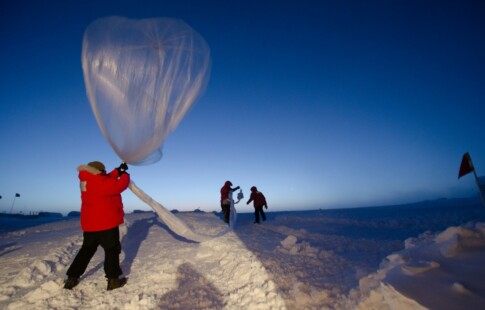
How Do Plants Help the Environment?
We are reader-supported. When you buy through links on our site, we may earn affiliate commission.
Most of the forest in Mount Rainier National Park’s 369 square miles is over 1,000 years old. This habitat has never been logged, and many of the trees are easily 200 feet tall. The old-growth forest within the park’s boundaries is one of the most peaceful places on earth. In addition to their beauty, trees and other plants benefit the environment and promote healthy ecosystems around the world. Without them, life on earth would cease to exist. Here are five ways that plants help the environment.
1. Clean the Air
As part of the process of photosynthesis, plants absorb carbon dioxide and convert it to energy. At the same time, they release oxygen into the atmosphere, giving animals like squirrels, bears, and people access to fresh and healthy air. These animals then breathe out carbon dioxide, creating a cycle that benefits all living organisms.
In addition to absorbing carbon dioxide, plants can also filter out pollutants from the air with no harm to themselves. This filtering property is one reason why so many people like to have plants inside their homes. It’s also why the air inside forests feels so fresh and pure.
Although one tree can absorb around 48 pounds of carbon dioxide in a year, most of the world’s clean air actually comes from marine plants like phytoplankton. Many marine mammals and other ocean-dwelling life-forms rely on this oxygen, but marine plants create enough oxygen to benefit life on land as well.
2. Bring More Rain
Plants also help to regulate weather patterns, such as when and how often it rains. For example, researchers studying rain patterns in the Amazon realized that plants were triggering monsoons months before wind patterns could be a factor.
As plants grow, they naturally release moisture into the atmosphere through a process called transpiration. In heavily forested areas such as the rainforest, transpiration can lead to a lot of moisture in the air and the formation of large seasonal storms.
Lots of rain leads to lots of plants, which can then cause more rain. Because plants are an integral part of the water cycle, areas with little vegetation tend to be dry and barren. One of the best ways to bring these areas back to life is to add plants and support them until the climate begins to shift.
3. Cool the Earth
In addition to affecting the weather, plants also act as natural air conditioning. The process of photosynthesis allows plants to trap the heat caused by carbon dioxide. When plants transpire, excess water evaporates off them and creates cool air.
Plants also block the heat of the sun and provide shade. You may have noticed a drop in temperature when you enter a forest – large stands of trees create pockets of cooler air through a combination of shade and natural processes. Many people plant trees by their homes for their shade and to reduce their cooling bills.
After plants capture carbon dioxide through photosynthesis, they use it for energy and to grow. When they die, the carbon dioxide they’ve accumulated over their lives is transferred into the ground. Because plants are so effective at trapping carbon dioxide, their presence can change the temperature of a whole area.
4. Impact Soil Health
Plants are also excellent recyclers. Although they take nutrients from the soil during their lifetime, they fertilize the ground when they decompose. Over time, layers of decomposing plant material create topsoil, or very fertile soil that’s perfect for growing new plants.
Healthy soil is responsible for filtering water, keeping it clean and fresh for other life forms. As plants grow, their roots create natural channels in the ground that help to capture and direct the flow of water. Through different biological processes, microorganisms in the soil are able to break down pollutants and purify water before it surfaces.
Plants also work to protect environments through soil stability. Root systems keep soil in place, reducing erosion during floods and other natural disasters. Stable soil keeps ecosystems intact, protecting other life forms that depend on plants for food and safe habitat.
5. Provide Resources
During the process of photosynthesis, plants convert energy from the sun into sugar and other usable forms of energy. Without plants, other forms of life couldn’t exist – both herbivores and carnivores ultimately rely on plants for the food they need to grow and thrive.
After food and water, most life forms need shelter to survive seasonal changes and create safe places to sleep, raise young, and hide from predators. Small plants, trees, and brush also create a safe habitat where every creature can live and thrive.
Loss of habitat through deforestation, wildfires, and pollution displaces many animals a year.
Protecting natural environments and the vegetation unique to each ecosystem is one of the most important things people can do to protect the animals that call these places home.
Plants Are Essential
Without plant life, thriving ecosystems couldn’t exist. The natural processes plants use to grow impact everything from air quality to the weather and supply other plants and animals with the resources they need to thrive.
Because they’re so vital to the health of the planet, plants deserve protection and care. When people take care of plants, they’re investing in the health of their entire ecosystem and the future of life on earth.
Share on
Like what you read? Join other Environment.co readers!
Get the latest updates on our planet by subscribing to the Environment.co newsletter!
About the author
Jane Marsh
Starting from an early age, Jane Marsh loved all animals and became a budding environmentalist. Now, Jane works as the Editor-in-Chief of Environment.co where she covers topics related to climate policy, renewable energy, the food industry, and more.





